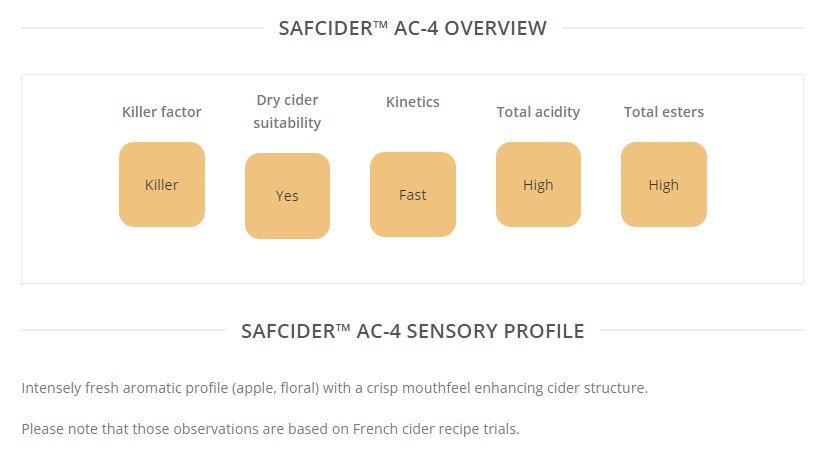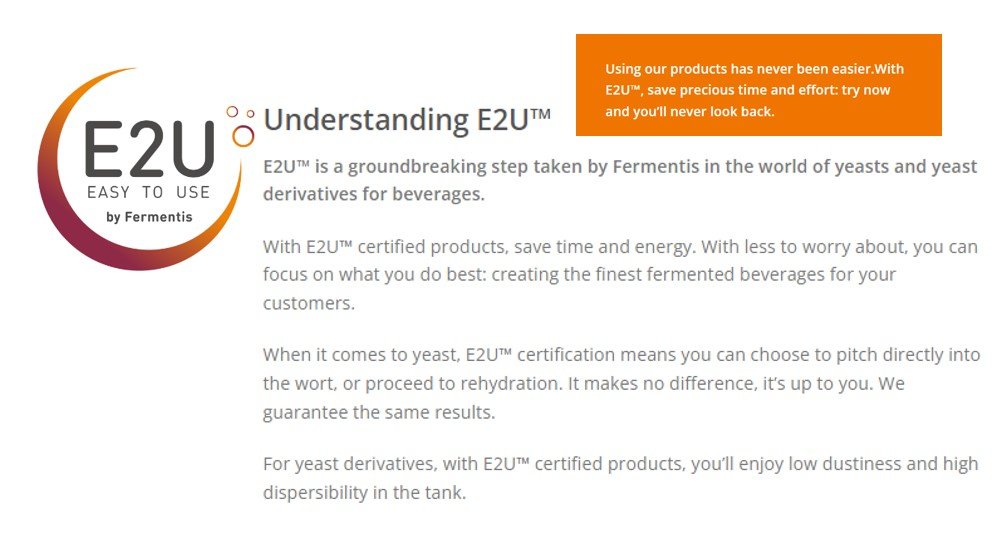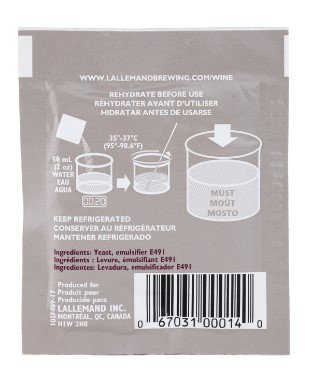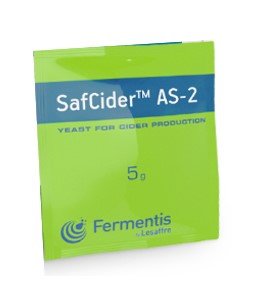Fermentis SafCider™ AC-4 Active Dry Cider Yeast
The best cider yeast for an intensely fresh aromatic profile (apple, floral) with a crisp mouthfeel enhancing cider structure.
DOSAGE
– 10 to 20 g/hl for first fermentation
– 30 to 40 g/hl for prise de mousse
USAGE
For sweet and dry ciders even under difficult fermentation conditions.
REHYDRATION PROCEDURE
Direct inoculation:
– Pour the yeast on the surface of at least 10 times their weight of must (possibly directly on the top of the tank or during tank filling after clarification).
– Gently stir to avoid or break clumps.
– Immediately transfer into the tank via a pumping over with aeration (or homogenize tank volume).
With prior rehydration:
– Pour the yeast on the surface of 10 times their weight of tap water at room temperature.
– Gently stir to avoid or break clumps.
– Wait for 20 minutes and transfer into the tank via a pumping over with aeration.
TECHNICAL CHARACTERISTICS
– Excellent settlement strength even with its sensitive to killer phenotype
– Fast kinetic
– Broad fermentation temperature spectrum: 10-30°C (50-86°F)
– Low nitrogen requirements: Ratio YAN**(mg/L)/Sugar(g/L) > 0.7 – 0.8
– Very good assimilation of fructose
– Maximum initial SO2 level recommended: 75mg/L
– Very low malic acid consumption (less than 0.4 g/L)
– Medium 2-phenylethanol and isoamyl acetate producer. High production of ethyl (fruity) esters
The best cider yeast for an intensely fresh aromatic profile (apple, floral) with a crisp mouthfeel enhancing cider structure.
DOSAGE
– 10 to 20 g/hl for first fermentation
– 30 to 40 g/hl for prise de mousse
USAGE
For sweet and dry ciders even under difficult fermentation conditions.
REHYDRATION PROCEDURE
Direct inoculation:
– Pour the yeast on the surface of at least 10 times their weight of must (possibly directly on the top of the tank or during tank filling after clarification).
– Gently stir to avoid or break clumps.
– Immediately transfer into the tank via a pumping over with aeration (or homogenize tank volume).
With prior rehydration:
– Pour the yeast on the surface of 10 times their weight of tap water at room temperature.
– Gently stir to avoid or break clumps.
– Wait for 20 minutes and transfer into the tank via a pumping over with aeration.
TECHNICAL CHARACTERISTICS
– Excellent settlement strength even with its sensitive to killer phenotype
– Fast kinetic
– Broad fermentation temperature spectrum: 10-30°C (50-86°F)
– Low nitrogen requirements: Ratio YAN**(mg/L)/Sugar(g/L) > 0.7 – 0.8
– Very good assimilation of fructose
– Maximum initial SO2 level recommended: 75mg/L
– Very low malic acid consumption (less than 0.4 g/L)
– Medium 2-phenylethanol and isoamyl acetate producer. High production of ethyl (fruity) esters
The best cider yeast for an intensely fresh aromatic profile (apple, floral) with a crisp mouthfeel enhancing cider structure.
DOSAGE
– 10 to 20 g/hl for first fermentation
– 30 to 40 g/hl for prise de mousse
USAGE
For sweet and dry ciders even under difficult fermentation conditions.
REHYDRATION PROCEDURE
Direct inoculation:
– Pour the yeast on the surface of at least 10 times their weight of must (possibly directly on the top of the tank or during tank filling after clarification).
– Gently stir to avoid or break clumps.
– Immediately transfer into the tank via a pumping over with aeration (or homogenize tank volume).
With prior rehydration:
– Pour the yeast on the surface of 10 times their weight of tap water at room temperature.
– Gently stir to avoid or break clumps.
– Wait for 20 minutes and transfer into the tank via a pumping over with aeration.
TECHNICAL CHARACTERISTICS
– Excellent settlement strength even with its sensitive to killer phenotype
– Fast kinetic
– Broad fermentation temperature spectrum: 10-30°C (50-86°F)
– Low nitrogen requirements: Ratio YAN**(mg/L)/Sugar(g/L) > 0.7 – 0.8
– Very good assimilation of fructose
– Maximum initial SO2 level recommended: 75mg/L
– Very low malic acid consumption (less than 0.4 g/L)
– Medium 2-phenylethanol and isoamyl acetate producer. High production of ethyl (fruity) esters
















